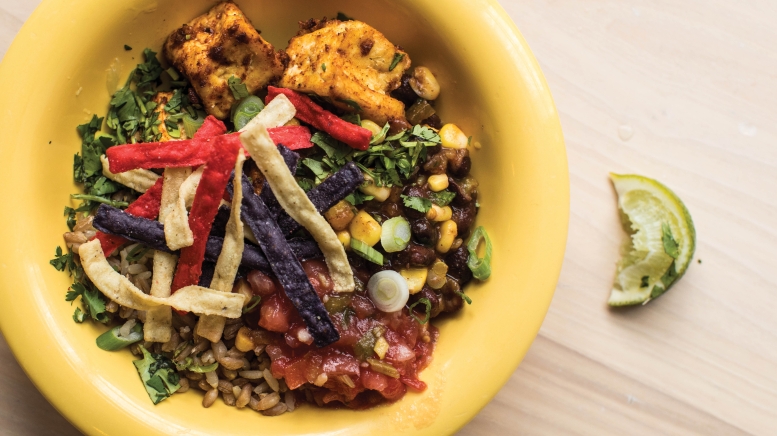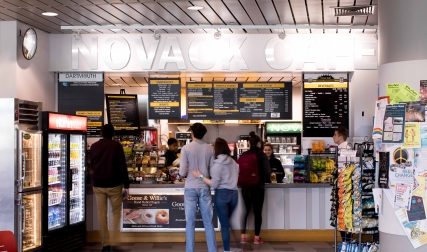For the last dozen or so years there has been a cultural shift in food served on college campuses across America. Starting as a yuppie trend, it has lasted long enough to be a paradigm. Food served on campus has gone from mystery meat in brown sauce to healthy, easily identifiable offerings.
Campus food has become much more than something you eat for energy to get through the day. It is now how you define yourself culturally, how creative and aspirational you are. Who are your peers? Who subscribes to the same view of the world as you do? Are you a vegan, a meat-eater, a gluten-free advocate or kosher? These are but a few of the niches to which modern campuses cater. If you are a jock who loves pepperoni pizza, you are entitled to the same culinary happiness as the purple-haired, peanut-allergic vegan who sits next to you in class.
I am invited to Dartmouth to sample the food the students eat. Having grown up and gone to college in the mystery-meat era, I am slightly dumbfounded by what I see before me at the College’s student dining venues. The choices are astonishing. No matter if you eat clean and properly or turn the government’s food triangle on its pointy-head, you will not go hungry. Even more surprisingly, everything looks appetizing. In the bad old day of college cafeterias your choices boiled down to “looks disgusting” or “looks really disgusting.” If you didn’t feel sick afterward, it was a good day. The food presented at Dartmouth’s dining halls looks more like it’s from a brochure for a cruise ship.
In the bad old day of college cafeterias, your choices boiled down to “looks disgusting” or “looks really disgusting.” The food at Dartmouth’s dining halls looks more like it’s from a brochure for a cruise ship.
As flabbergasted as I am at the bounty of food before me, I am also curious how this came to be. Did students demand better food? Did they choose their school based on what there was to eat? Was food part of the competitive equation, along with student-teacher ratios and tuition cost? One thing is for sure: Popular culture has much to do with this shift. Not too long ago “gourmet” food was the province of a handful of snobs. Similarly, “health nuts” were few and far between. Eating yogurt and kale was considered quite weird. “Regular” people ate regular food. Students, in particular, were not supposed to be fussy.
So what happened? Popular culture’s fascination with cooking, health and competition changed the playbook. It is not much of a leap from TV cooking contests such as Top Chef or Iron Chef to turn food into what was once the aggressive, balls-to-the-wall domain of sports. Being healthy no longer means getting a physical once a year. It’s now a daily discipline that includes not just exercise but also proper nutrition. So yes, food is an indisputable part of why people will pick one college over another.
It may surprise you to learn that there are serious lists published each year that rank colleges by their food. As with sports rankings, it is a big deal to make it into the Top 10. Not surprisingly, these lists differ widely as to which schools are best, but what brings in the accolades is a specific formulary.
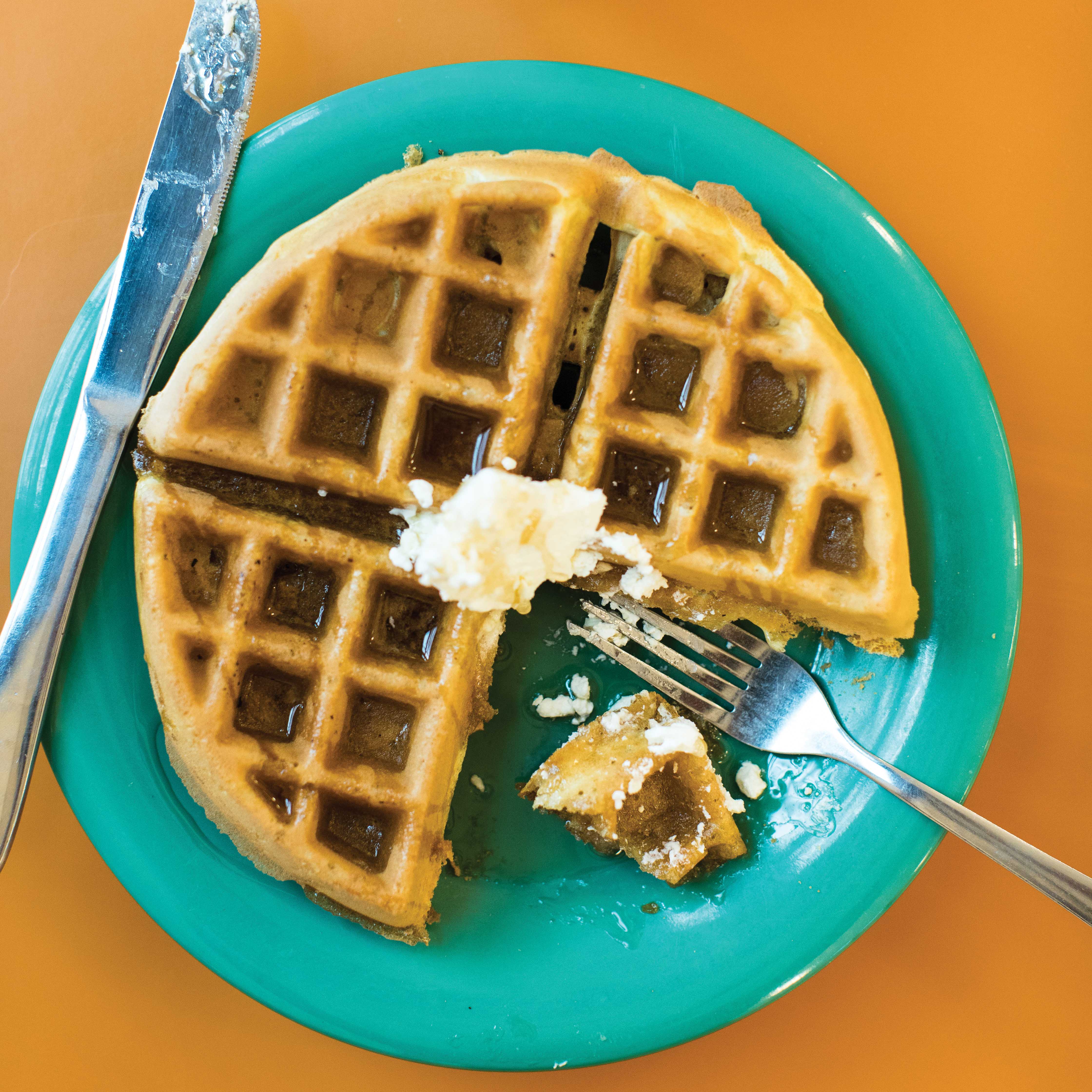

Great college food must be healthy, fresh, sustainable, ethnically diverse, farm-to-table, ethically sourced and tailored to food allergies, cultural customs and the growing numbers of vegan, vegetarian and gluten-free eaters. It doesn’t hurt if it tastes great.
If you google these Top-10 lists you will see a very broad selection of colleges and universities. Some are big Ivy League schools, and some you might not be familiar with.
I was surprised that on one Top-10 list, at bestcolleges.com, the No. 1 spot went to the Rev. Jerry Falwell’s faith-based Liberty University in Virginia.
A visually modern campus dining area looks more like a food court at the mall. Long gone is the weary slide-your-tray-along-the-rail-and-watch-the-cafeteria-ladies-slop something-onto-your-plate.
At Dartmouth two venues—Collis Café and the Class of 1953 Commons (formerly Thayer Dining Hall and now referred to as “FoCo”)—are brightly lit, colorfully decorated and divided into many food stations. It is a dizzying selection, sometimes a bit too dizzying. I am sure if you eat at these commissaries daily you know exactly where to go. I sailed about untethered with a tray in hand, bouncing like a pinball from place to place.
Some of the selections were clear. You could not miss the section for vegans, which looked like a cordon sanitaire. Placards remind you to not cross-contaminate by using plates that may hold non-vegan foods.
Nearby is the kosher food section. Keeping kosher is an elaborate biblical system of separating dairy from meats, not intermingling dishes or cutlery, and serving only foods that a rabbi deems kosher (no shellfish, no ruminants without cloven hoofs). I was expecting potato latkes and pastrami, but the kosher meal of the day was a tame curried chicken salad. I was told that on holidays (the high ones, not Christmas) there is gefilte fish and matzo ball soup. My observation was that kosher is not a very popular choice during lunch. I saw only one customer, a big blond boy in a hockey shirt. “Are you kosher?” I asked. “No, I just like this food,” he replied. I left it at that.
I found my favorite food at the World Café. Some days there might be a foray into African food, or Thai food, or food from the Island of Yap (not really).
Ma Thayer’s is another station at FoCo. I like the name because it sounds like a place where one can eat a good square meal such as shepherd’s pie or beef stew. I like Ma Thayer’s because it is not doctrinaire. You can eat as much gluten and fattening things here as you want. As the comfy name suggests, “Ma” serves the kind of stick-to-your-ribs food that health nuts hate.
But culinarily Ma Thayer’s is a bit of a jumble shop. Here, for no apparent reason, you will find the Pasta Bar, where noodles of many shapes and sizes and three kinds of sauces are served. The carbonara and alfredo sauces looked identical and tasted the same: white, thin and floury. The bright red marinara sauce was delicious. I learned later that it arrives in a can—which means it will always be good as long as somebody has a can opener. Making pasta sauce with fresh tomatoes is awful. I went back for seconds and hope it is a menu staple. Having pasta and chicken parmigianino served alongside quinoa salad made no sense. It was like going out for Chinese food and then finding the menu offering a choice of General Tso’s chicken or Hungarian chicken paprikash. Culturally confusing.
I found my favorite food at the World Café, which features a rotating menu of fare from many nations. Some days there might be a foray into African food, or Thai food, or food from the Island of Yap (not really).
Ironically, the day I ate there the globally aware World Café was serving corn cakes, one of the most iconic foods of New England. I suppose that if you grew up on Yap and now found yourself in New Hampshire, these griddle-fried cakes might seem exotic.
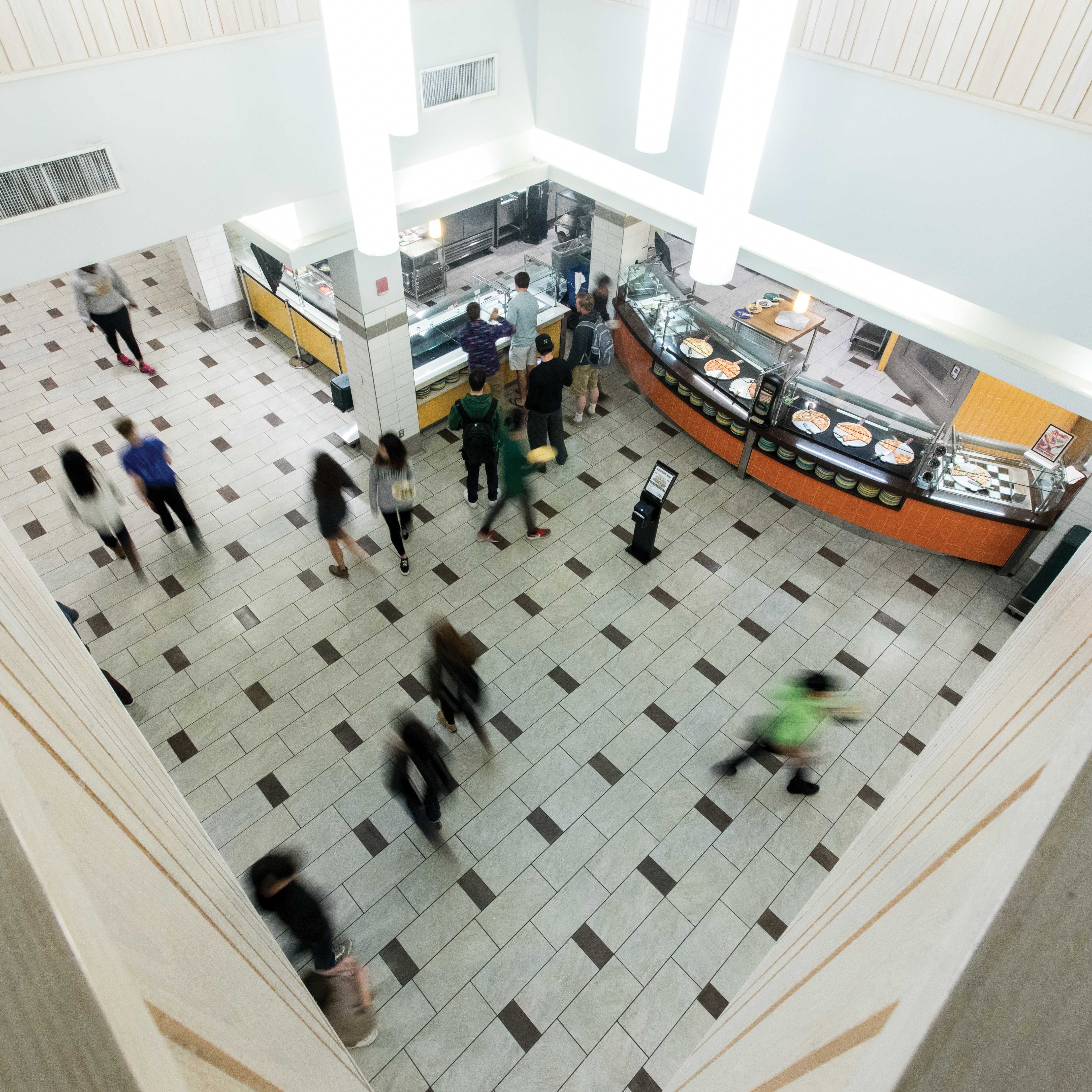
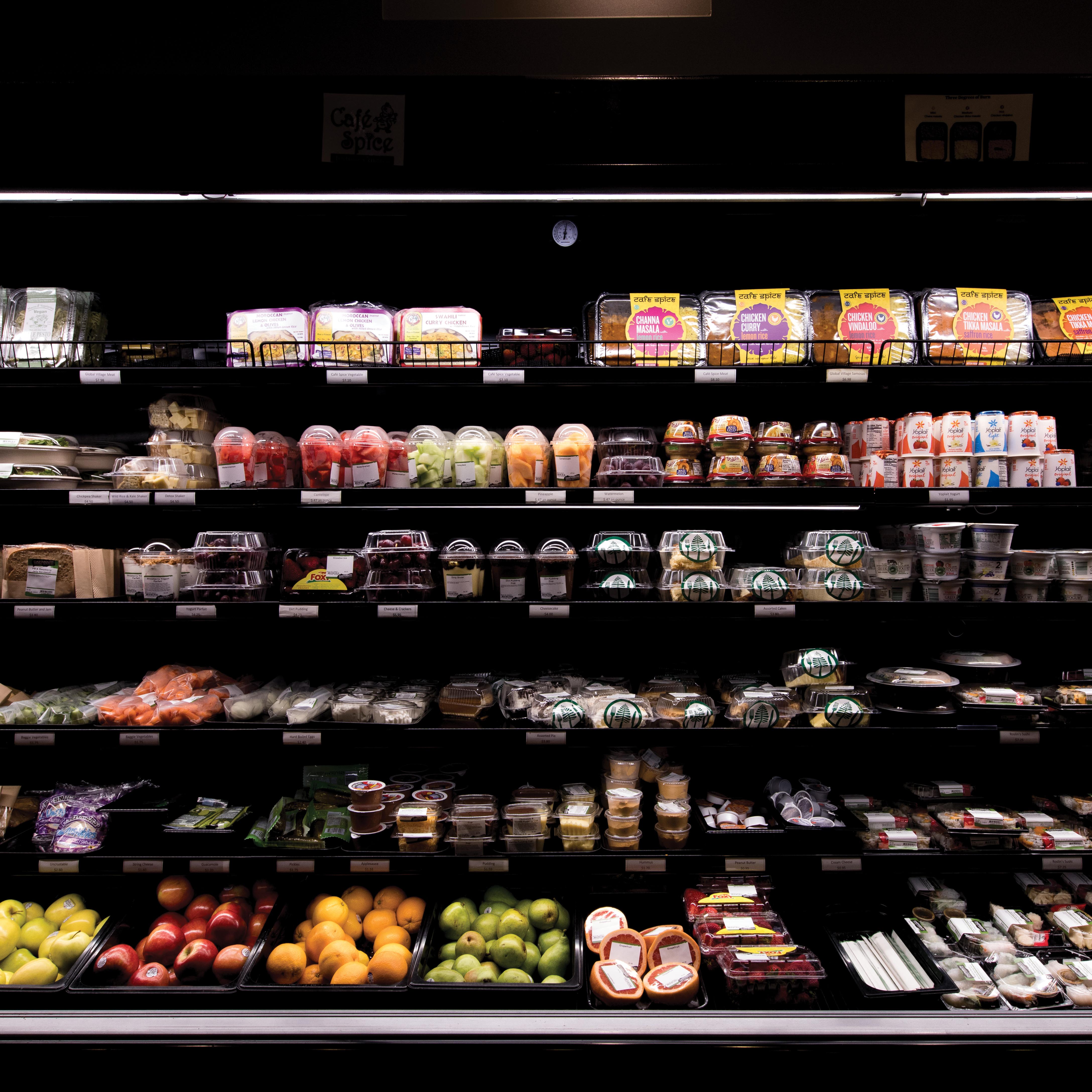
I adored the corn cakes. Some I ate buttered with maple syrup, some I topped with mango salsa and cilantro crema, some I just ate plain out of my hand in a nod to the derivation of the corn cake’s historic name, “johnnycake,” which started as journey cake, a food designed to be eaten by New England settlers on the move. To fulfill World Café’s global premise you could also top them with chicken tikka or beef barbacoa. Frankly, I liked them unadorned.
Loving gadgets does not mean I am good with them. I demonstrated this at breakfast at FoCo trying to use the “squeeze it yourself” juice machine. Fresh grapefruits and oranges are laid out on the table, and when you slice one in half you cup it in the palm of your hand and squeeze it down fast on a rotating cone to extract the juice. It is a wonderful idea but my hand kept slipping and I shrieked every time a grapefruit half became airborne, the pulp splattering my shirt. Hardly anyone looked up from his or her meals, so I can assume this is not unique.
I wish I could say that Dartmouth topped all the Best College Food lists, but it doesn’t. In fact, the College is pretty much invisible. I pondered what could make the eating experience more competitive, so here are some thoughts.
First, there is nothing wrong with the food on campus. Much of it is good, some of it is very good. But it lacks focus and becomes confusing. While I know the trend is “more is better,” I would cut the number of food stations in half, make each one’s purpose clearer, and perfect the foods offered, not add more.
As an example of the consolidation idea, I would move the Italian selections away from the generic Ma Thayer’s and simply call it the Pasta and Pizza Bar. New England has the best Italian food this side of Italy, and I can’t think of a better place to start a revamp. All pasta is good, but great pasta is legendary. This is an aspirational idea easily within reach.
As for pizza, it is not unusual for restaurants or even private homes to have a special pizza oven (wood fired or coal) that produces thin, gorgeous, semolina-charred crust that is Neapolitan style. When the dough is great, pizzas do not need the awkward fattening toppings that I saw at FoCo: potato pizza, pizza dripping with bacon, and globs of bland cheese are clumsy and not very good. Simple slices of tomatoes, olive oil sprinkled with herbs—that sort of thing is perfect. With this easy tweak, pizza becomes a healthy food and, alongside the pasta bar, makes a complete statement.
Dartmouth is in the heart of New England, and although many campuses go berserk trying to serve every food of every nation, I would look back at the College’s roots and investigate true New England foods—from chowders to fried clams to lobster casseroles, and desserts such as Indian pudding and rhubarb grunts. I can assure you this is an audacious and unique idea that no other colleges have pulled off. They are too busy making lackluster Ethiopian food. If you want to celebrate a culture, why not start with one’s own?
Take a lesson from the airlines and hire a celebrity chef or influential foodie to work on the menu and attach his or her name to the dishes. Support and buy from local farm purveyors and advertise it. The endless signage at Collis and FoCo describing what ingredients a dish has or doesn’t have caused my eyes to glaze over. Make eating a learning experience. Most people find it intriguing to know the history and provenance of what is being served. It is not enough anymore to say “Mexican salsa.” What region of Mexico is it from, and how is it unique?
If the old adage “you are what you eat” is true, then Dartmouth is doing something very right.
With that said, I would like to end on a high note. I forgot exactly which food station I was at, but as I crept along the line with my tray I found myself paying less attention to the food and more to the students in front of me. I have never seen such a crowd of beautiful people, everyone sleek and healthy and glowing. When I reached the head of the line I blurted out, “I’ll have what they’re having,” words that in my 40-year career as a food critic had never before passed my lips.
If the old adage “you are what you eat” is true, then Dartmouth is doing something very right.
I did not attend Dartmouth. I attended another Ivy League school known for its secret societies, a cappella singing and bulldogs. Not to knock my alma mater, but the students at Dartmouth make my peers look like the cast members from the cantina scene in Star Warsor perhaps the waiting room of death in Beetlejuice. I will probably be publicly whipped at dawn (as were Dartmouth’s two cooks when they were found drunk in 1774—the same year New Hampshire Gov. John Wentworth accused them of serving “putrefied stinking provisions”) but I call it as I see it.
Jane Stern is best known for the Roadfood guidebooks she wrote with Michael Stern. She writes for many magazines and now is a regular contributor to The Paris Review. Last year the Smithsonian Institution installed the Jane and Michael Stern Collection as a permanent source for studies in American regional food and culture. View a slideshow of Stern’s favorite discoveries from Dartmouth’s dining halls. Read a student foodie’s guide to campus dining venues.
From the Archive: Bon Appétit editor Bill Garry ’66 reviews College fare in our February 1992 cover story. Rebecca Gray and Alice Gomstyn ’03 present a mini-feast of assorted anecdotes, musings and fast food facts about College cuisine in our July/August 2003 issue.
